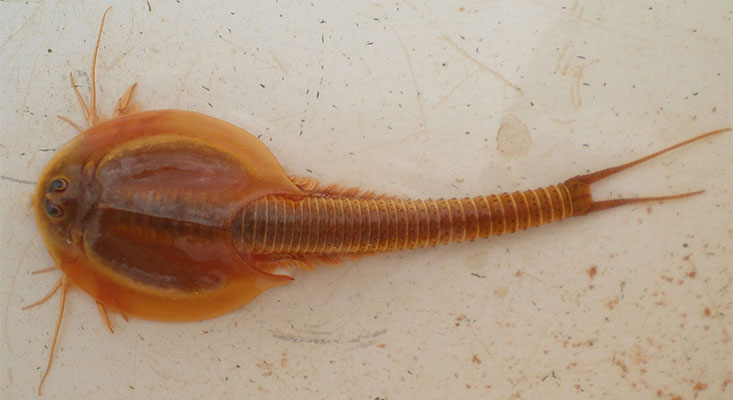Phylogeny and genome evolution of the Crustacea by means of phylogenomic studies

Insects are land-dwelling crustaceans. This finding has turned our understanding of the evolution of crustaceans upside down. However, despite intensive research, the relationships between and within the major crustacean taxa have not yet been convincingly elucidated. Thus, fundamental trait transformations and the origin of evolutionary novelties, both morphological and genomic traits, can only be inadequately traced. With the help of elaborate phylogenomic analyses, based on the largest transcriptome data set on this question, it could at least be shown that the cave-dwelling Remipedia probably represent the sister taxon to the insects.

Figure: Reconstruction of phylogenetic relationships within the Crustacea based on 1077 genes (from Schwentner et al., 2017).
State-of-the-art Next Generation Sequencing methods allow us to collect and analyse huge molecular genetic data sets ever more cost-effectively. Instead of examining one or a handful of genes, as was previously the case, hundreds or thousands of genes or even entire genomes can now be sequenced and examined at once. Based on these data sets, the relationships between the respective groups of animals can be resolved in much greater detail and accuracy. In addition, these data sets also offer the possibility of tracing the genomic evolution of the species studied. Depending on the approach used - genome sequencing, transcriptome sequencing, sequencing of ultra-conserved elements, etc. - it is possible to identify areas of the genome that were subject to particularly strong selection, to investigate changes in the evolutionary rate in relation to the way of life or the emergence and rearrangement of genes in the course of evolution. Thus, the elucidation of relationships serves as a basis for further questions.
Within the framework of this research project of the Department of Invertebrates II, the phylogenetic relationships between and within the major groups of the Crustacea (more precisely the Tetraconata, since the Crustacea are paraphyletic with respect to insects) are in the foreground. Of particular interest are the relationships within the Malacostraca and the Branchiopoda and the underlying changes in the genomes of the respective taxa. In this project, transcriptome sequencing is combined with target enrichment and genome sequencing.
Selected publications:
- Schwentner, M., Combosch, D.J., Pakes Nelson, J., Giribet, G. (2017). A phylogenomic solution to the origin of insects by resolving crustacean-hexapod relationships. Current Biology 27:1818-1824.
Lectures and Posters:
-
Schwentner, M., Richter, S., Rogers, D.C., Giribet, G. (2017) ‘Taxon-specific matrices and the power of phylogenomic analyses to resolve critical nodes: A case study of Tetraconata’ 110. Jährliches Treffen der Deutschen Zoologischen Gesellschaft (DZG) in Bielefeld (Satellite Symposium on Genomic Systematics), Vortrag
-
Schwentner, M., Combosch, D.J., Pakes Nelson, J., Richter, S., Giribet, G. (2017) 'Crustraceen Phylogenie: Neue Erkenntnisse zur Evolution der Crustacea basierend auf Transkriptom Analysen', 18. Crustaceologen Tagung in Berlin, Vortrag
-
Schwentner, M., Giribet, G. (2017) 'Emerging from the murky waters of crustacean phylogenetics - A phylotranscriptomic approach.' Museum of Comparative Zoology lunch time seminar, Harvard University, Vortrag
-
Schwentner, M., Combosch, D.J., Pakes Nelson, J., Richter, S., Giribet, G. (2016) 'Pancrustacean phylogenomics – new insights into pancrustacean evolution from large-scale transcriptome analyses' 109. Jährliches Treffen der Deutschen Zoologischen Gesellschaft (DZG) in Kiel, Vortrag

